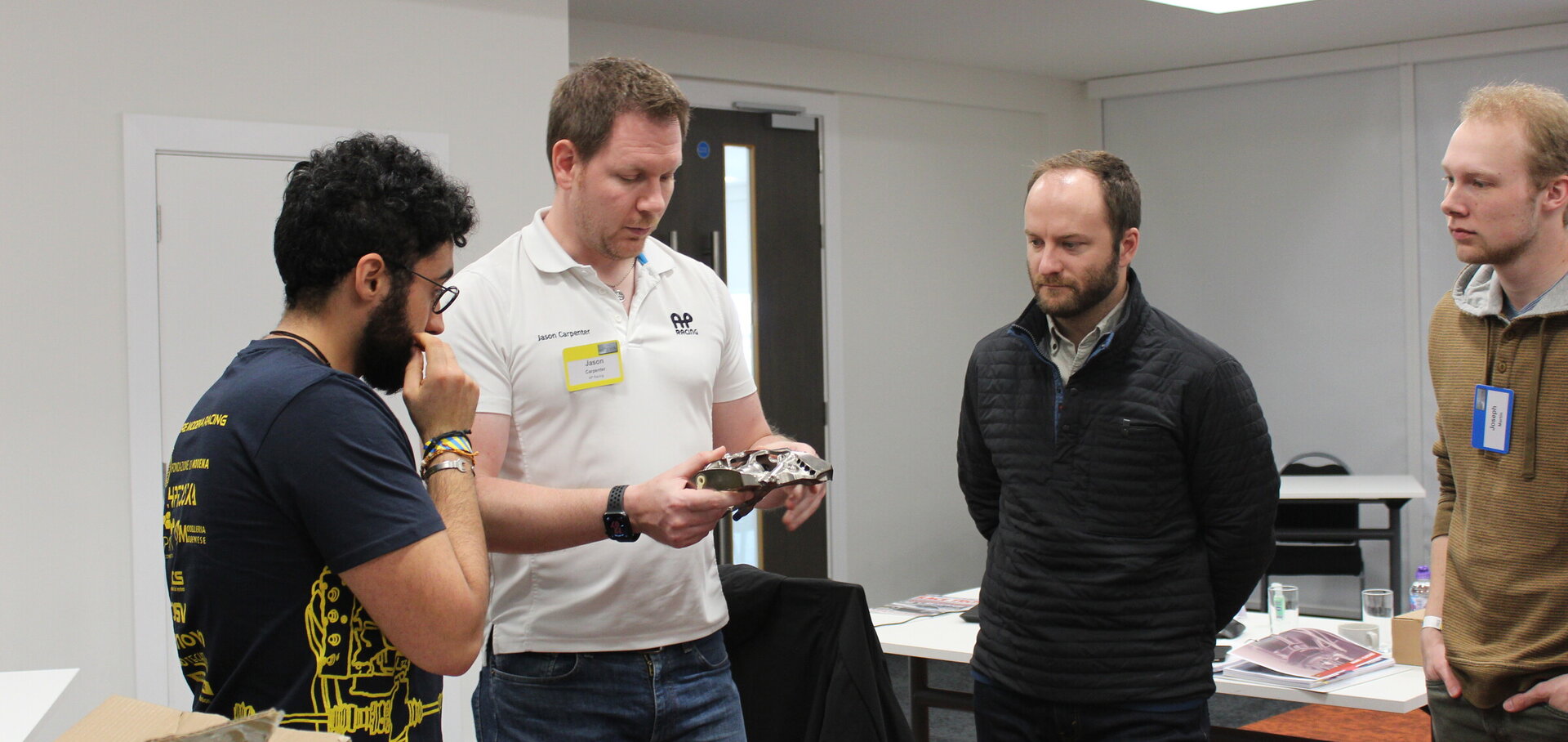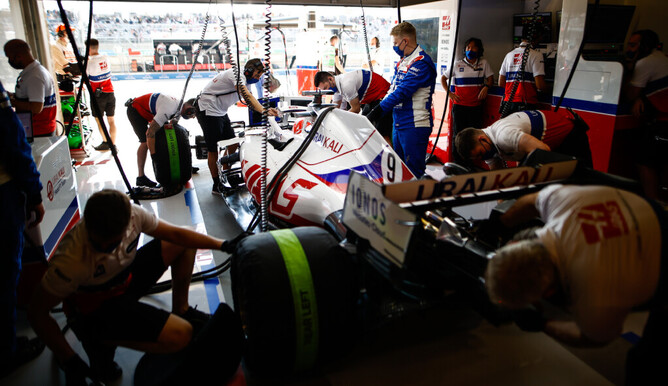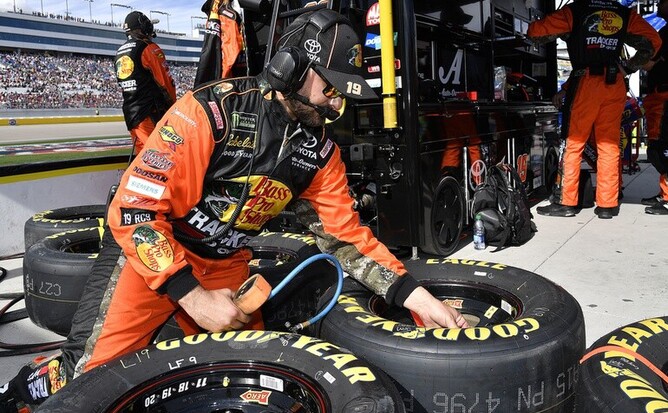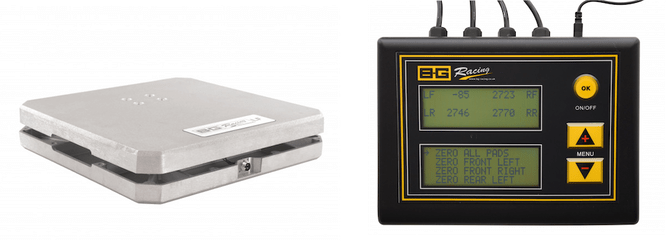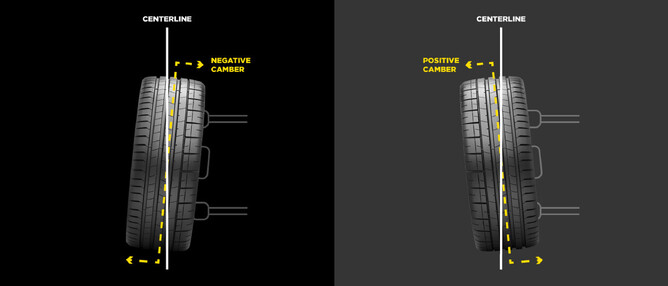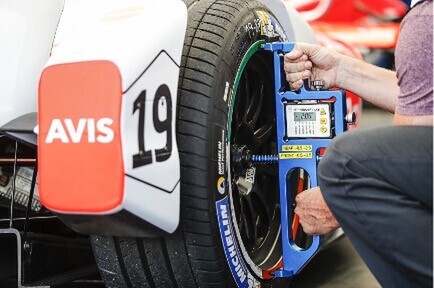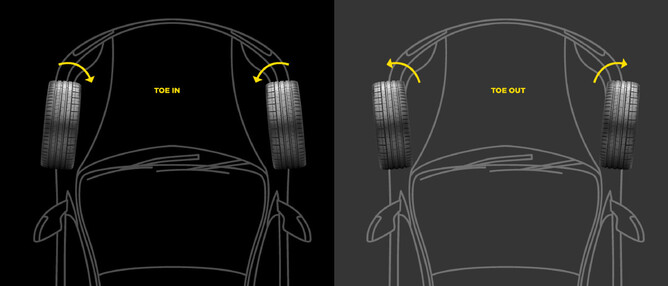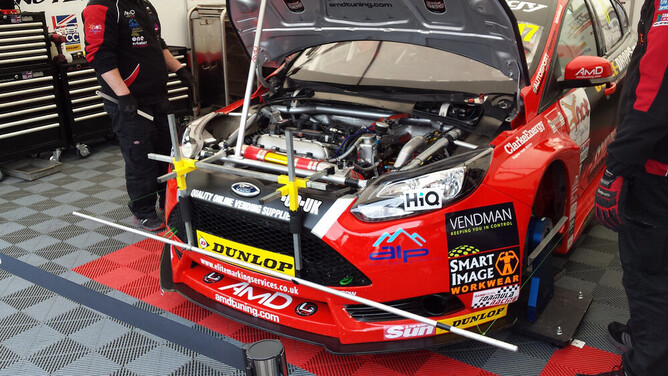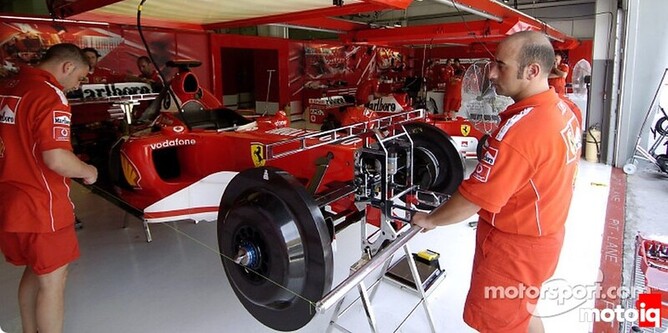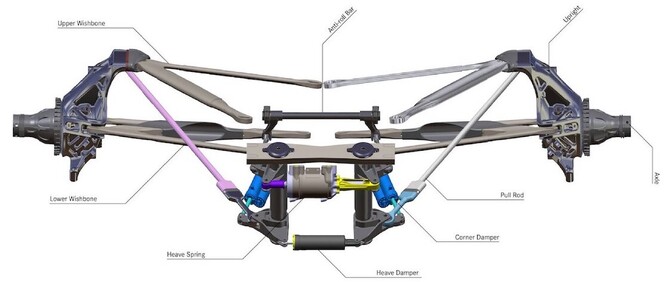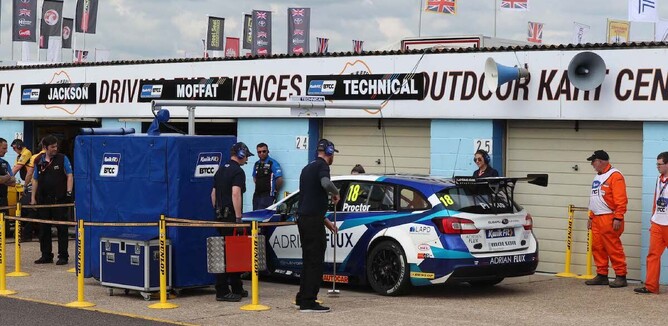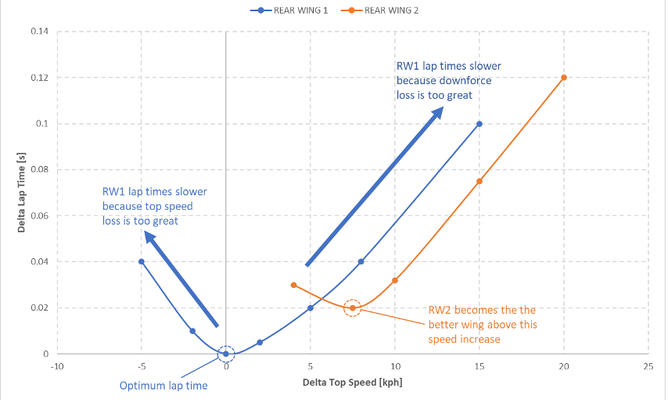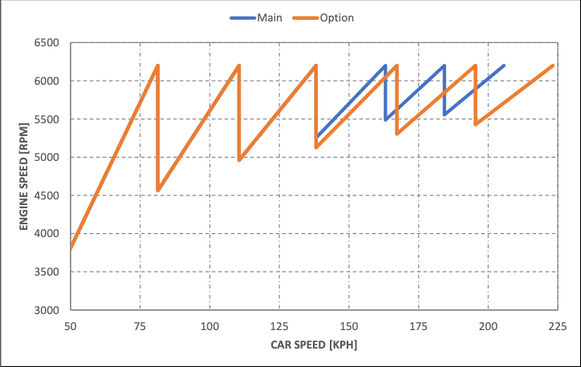Why is set-up so important?
Regardless of the level of motorsport, the car that turns up at an event is a product of a lot of design effort. This might be supported by a vast Formula 1 team or the result of a one-man track day car build. They have done their best to build the ultimate racing machine, but, if you turn up at a track with it as designed, you’re unlikely to win.
That's because all circuits, hill climbs and rally stages have different layouts and characteristics. This includes the number of corners, tarmac type, length of straights, altitude, race length and of course the weather. The best race cars are designed with sufficient adjustability to allow engineers and drivers to optimise them for every circumstance.
Tyres
Pneumatic tyres are common to everything from Formula 1 to track cycling. To get the most out of your chosen form of racing, they have to be working properly. To achieve this, you have to keep tyre pressures and temperatures under control even if you're not allowed to use tyre blankets or ovens.
Recent years have seen many Formula 1 events where teams have struggled to fire up the Pirelli tyres, Turkey 2020 being a great example. If they are not in the working window, you will be seconds off the pace.
Pressures can be difficult to manage because of the number of variables that affect them. Track temperature, air temperature, race length, tarmac roughness all need to be accounted for. Teams will utilise detailed spreadsheets and tools to calculate the cold pressures required to hit the ideal hot running pressures during the run.
For qualifying, cold pressures are set higher so that the optimum pressure is reached on the first lap. For the race, cold pressures are set lower, otherwise the stabilised running pressures would be too high after a few laps.
Weight and where to put it
Weight and weight distribution also affect all levels of motorsport. Total weight is relatively easy to understand - the lighter the car, the faster it is. Most series have a minimum weight limit to maintain a level playing field, so it has to be carefully monitored. There’s no point in being fast if you are disqualified, so it's the Race Engineers job to track the weight of the driver (including kit) and the car.
Every time the car is built and set-up, it will be put on corner weight scales, one under each wheel. Summing these together gives the total weight of the car, while adding the axle pairs gives the front/rear weight distribution. The individual corner weights show how squarely the car is set-up.
Some cars have adjustment built-in, usually adjustable spring platforms or pushrod lengths. Mechanics tune these to ensure that the two front wheels have roughly the same weight on them and the same for the rear. This should ensure that the car handles predictably.
In higher level series, there may be the opportunity to fit and move ballast. In the 2000's, Formula 1 cars were 20-30kg below the weight limit and so were required to add ballast. The regulations didn’t specify a front-to-rear weight distribution so tuning this became a primary car balance adjustment.
There is no single correct weight distribution as it needs to be tuned for the specific car, tyres, circuit and conditions. Those Formula 1 cars in the 2000's ranged from 45-50% weight on the front axle depending on the track. While today's Formula 1 cars are regulated between 45.5-46.5% weight distribution. This is out of tune with the tyres and is one reason why these cars are so difficult to drive.
Toe, camber and geometry
Toe and camber angles can be used to tune the balance of the car as well as tyre performance. Camber is the angle of the tyre relative to the vertical centreline. Usually, the car is set-up to have negative camber, but this may migrate to positive camber during corners as the suspension geometry articulates.
Camber affects the lateral grip a tyre can produce and changes the size of the contact patch. The former can be altered between front and rear axles to affect turn in on corner entry as well as cornering power. The latter can be used to adjust tyre warm-up or wear if necessary. It is usually measured with a camber gauge of some kind.
Toe is the angle between the tyre and the horizontal centreline of the vehicle. It primarily affects the balance of the car during turn in. Typically, the front axle is set-up to be toe out and the rear axle is set-up to be toe in.
Stringing the car
A car with set-up equipment attached is a common evening sight in the pitlane. To help set the wheel alignment, the traditional stringing technique is used in nearly all categories of racing. Beams are attached to a set point on the front and rear of the car while strings are connected from front to rear at the hub centre height. These strings offer a fixed place to measure toe angle, which is often quoted in millimetres rather than degrees.
Often the car will be fitted with dummy set-up wheels instead of tyres to give an easier measuring reference and remove variations between different tyre specifications. Teams will repeat this set-up process after each session to check that the car finished as expected.
Mechanical changes
The suspension is another area that Race Engineers can adjust to suit the track conditions. The key tuneable elements are the springs, anti-roll bars and dampers which will come with a range of different stiffnesses to choose from.
Different categories of racing use different types of suspension layouts, but whatever the layout, the aims are generally the same. The Mercedes Formula 1 layout below is likely to be typical of 2022 regulation cars. The heave spring and damper is arranged to only operate as the car moves vertically, while the anti-roll bar only operates in roll. There is also a damper attached to each wheel.
Springs are tuned for handling, aerodynamics and ride. For heave stiffness, the compromise is between ride, centre of gravity height and aerodynamics. The car should be soft to handle kerbs and track imperfections but stiff enough to keep the car in the ideal position on the aero map whilst avoiding hitting the ground.
Anti-roll bars are used to change the roll stiffness and handling balance of the car. The relative stiffness of the front and rear axles determines how much lateral load is transferred across each. In combination with tyre characteristics, this affects the level of oversteer or understeer. Overall roll stiffness will affect the kerbing ability of the car and how responsive it feels.
Aerodynamic set-up
Some series have regulations that allow for a large amount of downforce. The mechanical set-ups of these cars are often compromised to optimise the aerodynamics. Even in series like the BTCC, ride heights are critical set-up items as evidenced by rigorous post-race regulatory checks.
In series like F4, where there is not much information about the car, aerodynamic set-up will be relatively basic. High downforce or low downforce is selected to suit the track characteristics. Other aerodynamic tweaks include adjusting front wing angles to balance the rear wing as well as bodywork openings to manage temperatures.
In Formula 1, teams have detailed aeromaps which summarise balance, drag and downforce over a range of ride heights and car attitudes. They cover all of the possible bodywork and wing options available to the race engineer.
To make sense of this, lap simulations are used to quantify performance trade-offs. Prior to an event, simulated laps will be performed for each wing level, cooling configuration, brake duct and bodywork option. The results will then be analysed to select the optimum. Let's look at an example of two rear wings: RW1 is medium downforce and RW2 is lower downforce.
Teams will look for the fastest lap time, which is at zero on the y-axis and in this case is RW1 on its third setting for this track. Other settings produce top speed changes, shown on the x-axis, but lap times are slower because of the trade-off between drag and downforce. Sometimes, the Race Engineer may want to trade lap time for top speed, to make the car harder to overtake during a race.
The choice will be made based on the probable lap time penalty, opting to gain 15kph on RW1 here will cost 0.1s per lap. In this example, RW2 is always slower than the optimum setting on RW1, but that doesn’t make it useless. RW2 achieves that 15kph top speed gain for a reduced lap time penalty of 0.07s and becomes the wing of choice.
Electronics
The rise of complicated ECU options in most forms of motorsport means there is a whole range of set-up work needed on the software side of things too. Steering wheels now have multiple switches that can be used to tune the active differentials, engine power modes, hybrid regeneration and brake-by-wire for example. Each setting will relate to a set of pre-defined maps that also require detailed tuning.
Gear ratios
In many series, there are multiple gear ratio options. If the engine hits the rpm limiter, then the car won’t reach the speed its drag level suggests for a given circuit, lap time will be lost. Running long ratios everywhere would solve this, but the rpm drops become larger and may drop the engine out of its optimum power band.
Individual ratios can be changed to suit certain corners. If an up or downshift is needed too close to a corner, a different ratio may help to move the gear change point. A ratio change also offers a step up or down in torque, giving the driver a means to effectively alter throttle response for a given turn.
Record keeping is key
Set-up histories and communication are key to being a successful Race Engineer. Each car or team will have a set-up sheet and some form of set-up history. They vary greatly and may be anything from an Excel spreadsheet to a bespoke database. The records are vital for use in subsequent years, simulator correlation as well as optimising new car designs.
Each set-up generates a set of numbers used to quantify the changes being made. Understanding the size of the change and how changes affect each other is crucial. For example, if you change corner springs to adjust rear heave stiffness, you need to know how rear roll stiffness changes. The roll stiffness distribution number allows the engineer to select an anti-roll bar to match the overall roll balance.
A complicated subject
This article has only brushed the surface of racecar set-up. If you want to learn more, then why not join the MIA School of Race Engineering's Racecar set-up online module where you will learn the latest techniques from leading Race Engineers.
